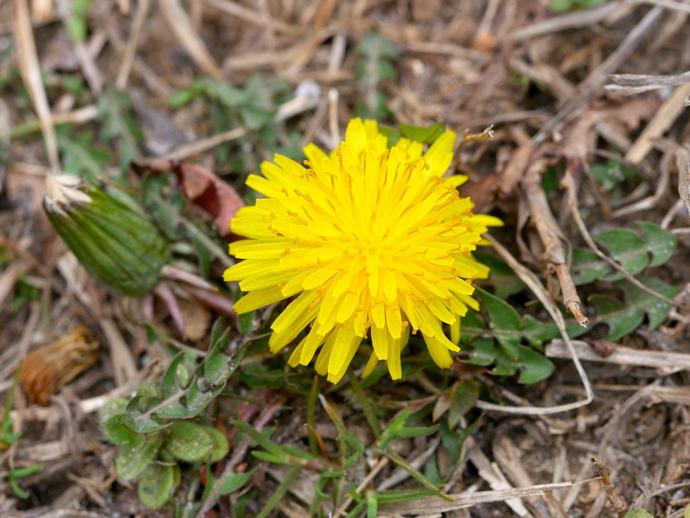March 16, 2021
Ben here with today's edition of #BenInNature presented by our friends at Carter Bank & Trust!
The common dandelion (Taraxacum officinale) is so ubiquitous that, like me, you might have assumed it was a native species. Remarkably, it is not! The common dandelion is native to Europe to Asia, and believe it or not, it was introduced in America to serve as a food crop!
What kind of food can you make from dandelions? You can make dandelion wine from the flowers, a beverage I was introduced to in the song "My Old Kentucky Home" by Randy Newman. You can also use the greens to make salads (apparently they taste similar to mustard greens), and the roots can be used to make a coffee substitute if you're REALLY hard up for a cup of coffee. You can even make jam from the flowers! It's a pretty versatile plant. Just be warned, it's also a diuretic, to the point that one common name for dandelions in England is supposedly "wet-a-bed."
Of course, for most people, their relationship with the dandelion is limited to trying to kill it when it pops up in their yard. This is mainly due to the dandelion's seeds, which are very good at their job. When dandelions go to seed and form "puffballs," each flower can produce anywhere from 50 to nearly 175 seeds, each of which can travel hundreds of meters depending on the wind. A single plant can potentially produce 5,000 seeds per year, and a dandelion seed can remain viable for nearly a decade. When you put all that together, it's easy to see how dandelions are able to spread so quickly!
ABOUT #BenInNature
Social distancing can be difficult, but it presents a great opportunity to become reacquainted with nature. In this series of posts, Administrator of Science Ben Williams ventures outdoors to record a snapshot of the unique sights that can be found in the natural world. New updates are posted Monday - Friday, with previous posts highlighted on the weekends. This series of posts is made possible thanks to the support of VMNH Corporate Partner Carter Bank & Trust (www.cbtcares.com)
NATURE PHOTO IDENTIFICATIONS
If you discover something in nature that you would like help identifying, be sure to message us right here on Facebook with a picture (please include location and date of picture) and we'll have our experts help you identify it!

 Hours & Admissions
Hours & Admissions Directions
Directions

